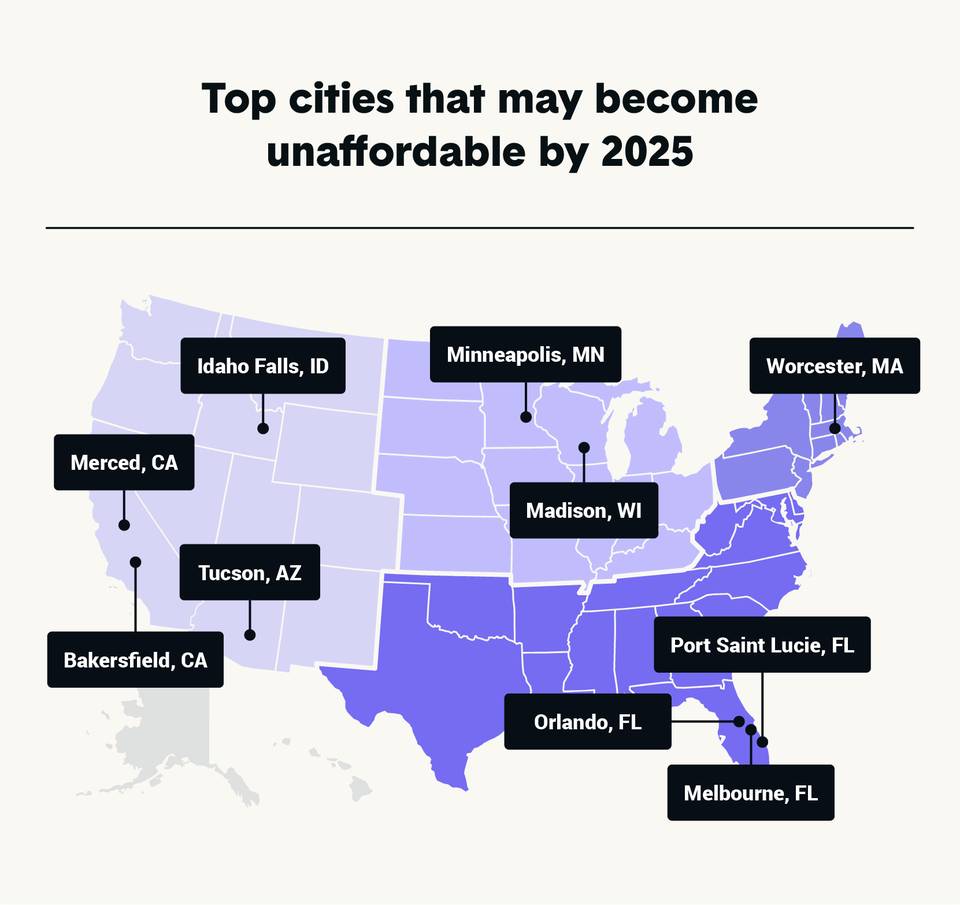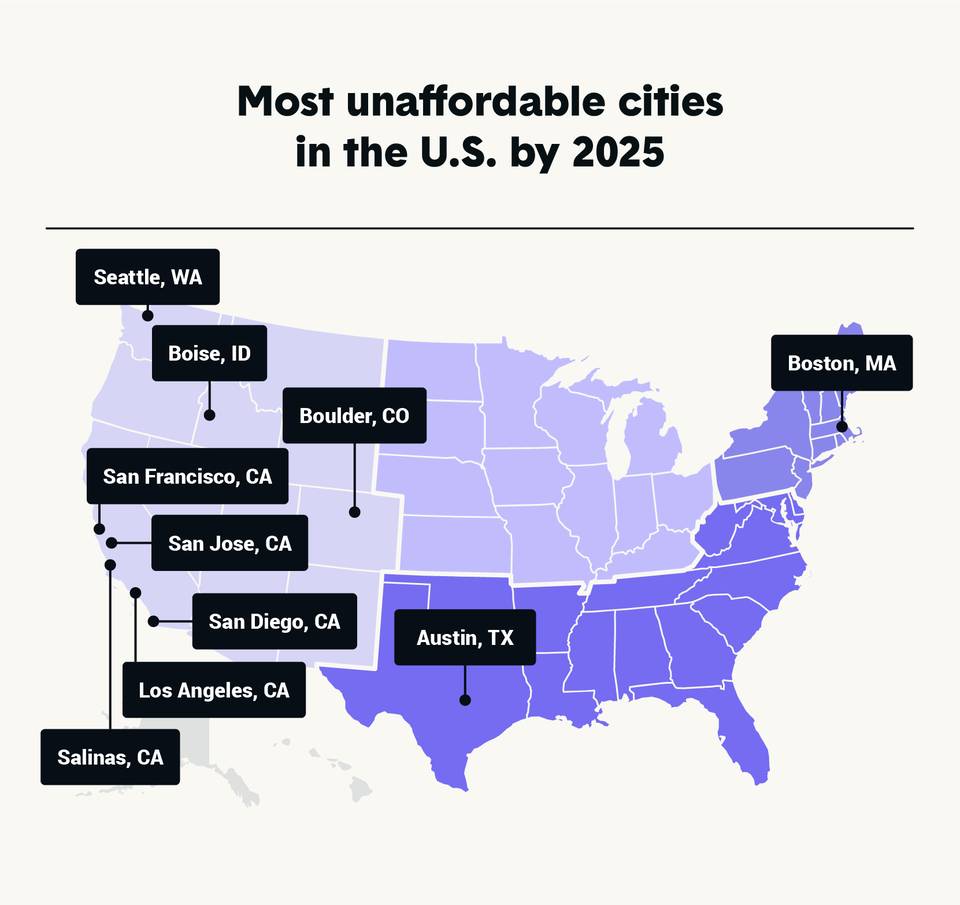When it comes to unaffordable housing, everyone knows that cities like San Francisco and New York are notoriously hard markets to become a homeowner in. However, as housing markets continue to heat up across the nation, more areas are becoming less affordable. Median home prices have seen record highs recently, and with so many other costs to account for like maintenance and insurance, the lack of affordable housing may delay the path to homeownership for some.
To help gather some insight into the changing housing markets, we’ve conducted a study projecting which U.S. cities may become unaffordable by 2025. Using Zillow’s typical home values, we forecasted their potential growth based on current year-over-year change projections. We then compared it to the projected median U.S. home value for 2025 ($481,692.98) to see what cities just miss the mark of affordability. Only cities that were not previously unaffordable were included in our list of top 10. Here’s what we found:
- Out of 177 cities studied, Worcester, MA is projected to become the top city both overall and in the Northeast to become unaffordable, with an estimated typical home value of $523,017.38, which is 8% higher than the projected U.S. median value.
- Bakersfield, CA is one of the top cities in the West that’s projected to become unaffordable by 2025. Typical home values are projected to rise to $520,933.24.
- In the South, Orlando, FL is estimated to become unaffordable, with typical home values increasing to $517,913.99.
- Out of the Midwest, a projected typical home value of $506,763.47 will knock Madison, WI out of the range of affordability.








